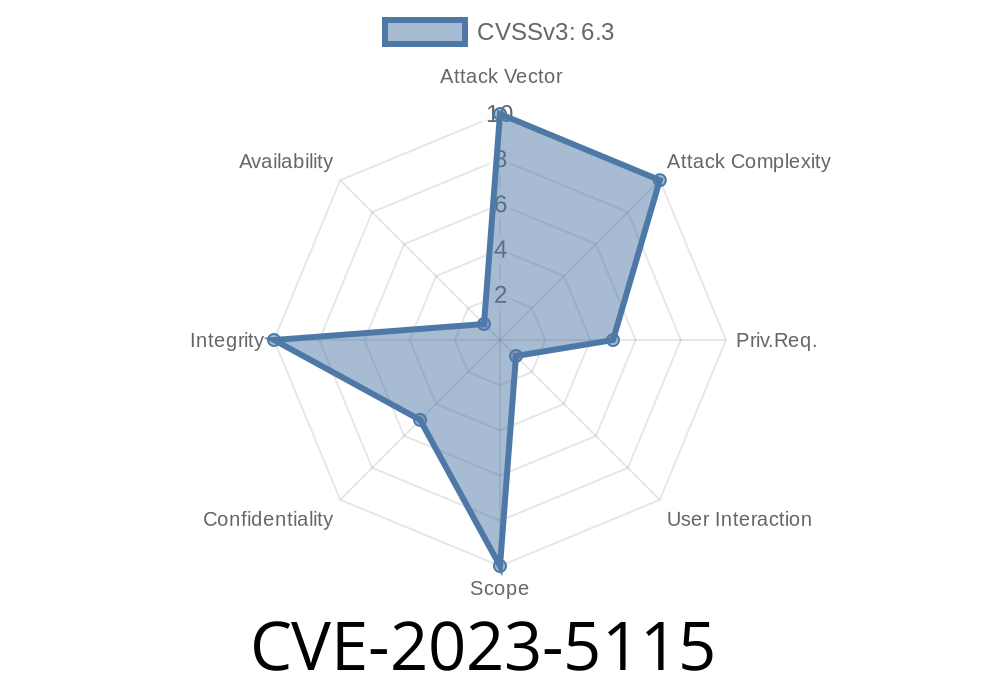A recently identified vulnerability (CVE-2023-5115) impacts the Ansible automation platform, a widely used automation tool in the IT industry, popular for its simplicity and ease of use. This vulnerability is an Absolute Path Traversal Attack, which allows an attacker to gain unauthorized access and potentially overwrite sensitive files on the victim's machine. This blog post will outline the details of the exploit, including a snippet of the malicious code, and provide links to the original references for further information.
Exploit Details
An attacker looking to exploit the absolute path traversal vulnerability in the Ansible automation platform will need to craft a malicious Ansible role. This crafted role will be designed to trick the victim into executing it, hence providing the attacker with the unauthorized access they seek.
By using a symlink (symbolic link), the attacker can overwrite any file outside the predetermined extraction path in the victim's system, effectively escalating their unauthorized access and control over the victim's resources.
Code Snippet
Below is a simplified example of what a malicious Ansible role may look like when exploiting the absolute path traversal vulnerability:
- name: Exploit CVE-2023-5115
hosts: localhost
tasks:
- name: Create malicious symlink
command: ln -s /etc/passwd /tmp/malicious_symlink
- name: Overwrite sensitive file
copy:
src: /tmp/malicious_symlink
dest: /path/to/sensitive/file
force: yes
As seen in this example, the attacker creates a symlink to the /etc/passwd file and overwrites a sensitive file using the copy module.
Possible Mitigations
To prevent falling victim to such an exploit, it is crucial for users of the Ansible automation platform to exercise caution when downloading and executing new roles from unverified or untrusted sources. Additionally, users should always keep their software up-to-date with the latest security patches to address vulnerabilities such as CVE-2023-5115.
Links to Original References
For more information regarding CVE-2023-5115, its implications, and possible remedies, please refer to the following resources:
1. Official CVE Details: https://cve.mitre.org/cgi-bin/cvename.cgi?name=CVE-2023-5115
2. Ansible Security Advisory: https://www.ansible.com/security
3. NIST Vulnerability Database: https://nvd.nist.gov/vuln/detail/CVE-2023-5115
4. Red Hat Security Advisory: https://access.redhat.com/security/cve/CVE-2023-5115
Conclusion
In summary, the Ansible automation platform is vulnerable to an absolute path traversal attack, as detailed in CVE-2023-5115. Attackers can exploit this vulnerability by crafting a malicious Ansible role and tricking victims into executing it. Therefore, users should remain vigilant in their cybersecurity practices, always validate the sources of new Ansible roles, and ensure their software is up-to-date with the latest security patches. Stay informed on the latest cybersecurity threats, and keep your systems secure!
Timeline
Published on: 12/18/2023 14:15:10 UTC
Last modified on: 12/29/2023 17:57:50 UTC
